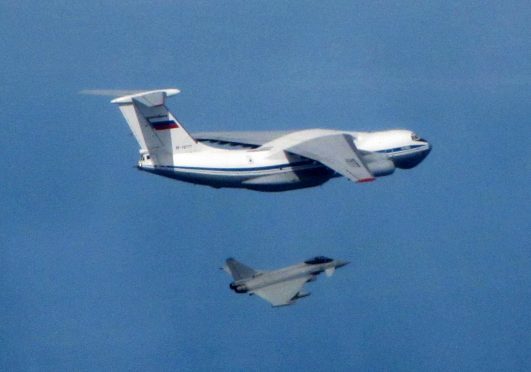Fighter jets from RAF Lossiemouth were scrambled earlier this week to intercept Russian aircraft.
Four Typhoons took off from Amari air base in Estonia early on Thursday afternoon to escort the military transports.
It is the first time the Moray crews have been called into action since they were deployed to the region three weeks ago as part of a Nato peacekeeping mission.
The Lossiemouth jets from II (AC) Squadron were stationed in Estonia, following reports that Russian planes were increasingly threatening the area.
Wing Commander, Gordon Melville, commanding officer of 140 Expeditionary Air Wing, said: “We have again proved our ability to secure the skies in the vicinity of the Baltic States.
“And we have demonstrated the close link between the RAF, Estonian and Nato units that have planned and enabled this defensive response so successfully.
“We will continue to be on stand-by 24/7 to secure the Baltic skies.”
The Lossiemouth crews intercepted three Russian planes that were not transmitting a recognised identification code and did not respond to communication.
Pilots were directed from the ground and used advanced sensors to track down the aircraft, that were identified as military vehicles.
One of the pilots said: “The scramble went exactly as planned. We launched our Typhoon aircraft quickly and then, using our advanced sensors and mission systems, combined with support from our Battlespace Managers on the ground, carried out textbook intercepts of the three aircraft.”
The Moray crews in Estonia are working with Portuguese F16s, based in Lithuania, during the peacekeeping mission.
This is the third consecutive year that UK jets have taken part in these missions. On the last occasion when Typhoons were stationed as part of it, they were scrambled 17 times to intercept over 40 Russian aircraft.
During one launch in July 2015, the crews were involved with 10 separate Russian aircraft, including eight fighters.
Defence Secretary Michael Fallon said: “This is another example of just how important the UK’s contribution to the Baltic Air Policing Mission is.
“We were able to respond instantly to this act of Russian aggression – a demonstration of our commitment to Nato’s collective defence.”
